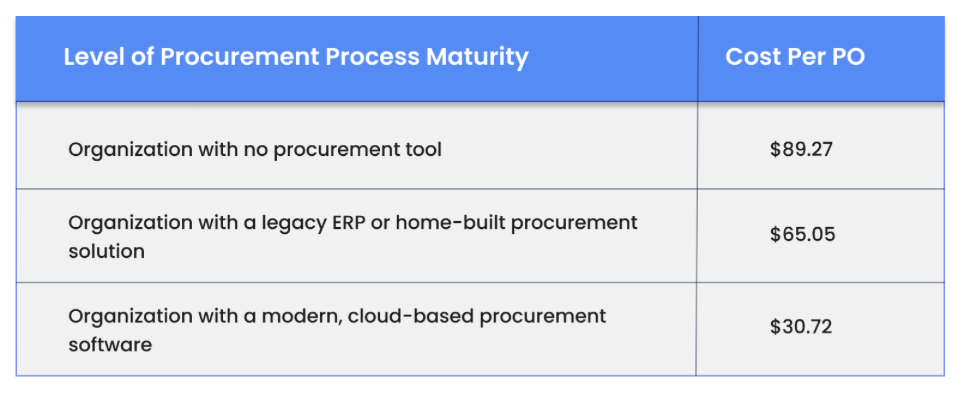Did you know that manually processing just 300 purchase orders (POs) could cost your business as much as a brand-new Honda Civic? That’s right—at $89.27 per PO, organizations operating in a reactive mode can rack up an astounding $27,000 in expenses just from handling 300 orders. In contrast, future-ready organizations, leveraging advanced automation technologies, can cut this cost by 66%, reducing it to around $9,000 by spending as little as $30 per PO.
This stark difference highlights the cost implications of an organization’s operational maturity, a key measure of efficiency and effectiveness in managing financial processes. Check out the video to understand the cost implications of operational maturity for your organization.
What Is Operational Maturity?
Operational maturity is a metric that gauges an organization’s efficiency in handling its financial and business processes, often tied to the extent of process standardization and automation. As an organization’s transaction volume grows, so should its level of operational maturity. According to Accenture, companies with higher levels of operational maturity experience, on average, 7.6% lower operating costs and a 2.3 percentage point increase in revenue.
For finance leaders, operational maturity isn’t just a metric—it’s a roadmap to reduced costs and enhanced efficiency. Let’s take procurement as an example to understand this further.
Procurement Process Maturity: From Ad-Hoc to Advanced
Procurement processes typically progress through three maturity levels: Ad-Hoc, Standardized, and Advanced. Each stage comes with its unique set of characteristics and cost implications:

- Ad-Hoc (Reactive): At this stage, procurement is unstructured and reactive, with manual and disjointed processes. This results in inefficiencies, poor visibility, and high costs due to reactive purchasing. The average cost per PO here can reach as high as $89.
- Standardized: As organizations introduce more structured processes and technology, procurement becomes more streamlined. However, without complete integration, errors and delays still lead to moderate costs of $65 per PO.
- Advanced (Future-Ready): At this level, procurement processes are fully integrated with other business functions, leveraging AI, data analytics, and strategic partnerships. Future-ready organizations spend as little as $30 per PO, achieving significant cost reductions.
As organizations climb the maturity ladder, they unlock significant efficiency gains. For instance, a reactive organization processing 300 POs spends around $27,000. Meanwhile, a future-ready organization saves nearly 66%, bringing that cost down to about $9,000.
Building a Future-Ready Organization
To move towards becoming a future-ready organization, CFOs need to break down silos and foster seamless data flow between finance and operations. By investing in advanced technologies, like AI-powered automation, they can optimize core processes, automate routine tasks, and enable dynamic scenario planning.
For finance teams, achieving operational maturity involves more than implementing new technologies. It requires a cultural shift towards continuous improvement and using real-time data to drive strategic decisions. This proactive approach boosts efficiency, lowers risks, and improves decision-making capabilities.
Moving Forward: Reactive or Future-Ready?
The key takeaway here is clear: operational maturity isn’t just about cost savings; it’s about positioning your organization for sustainable growth and strategic success. By transitioning from reactive to future-ready, finance teams can cut costs, improve efficiency, and play a more proactive role in driving business outcomes.
So, the question remains: Are you building the infrastructure to become a future-ready organization, or are you stuck in reactive mode, merely keeping the financial ship afloat?













































